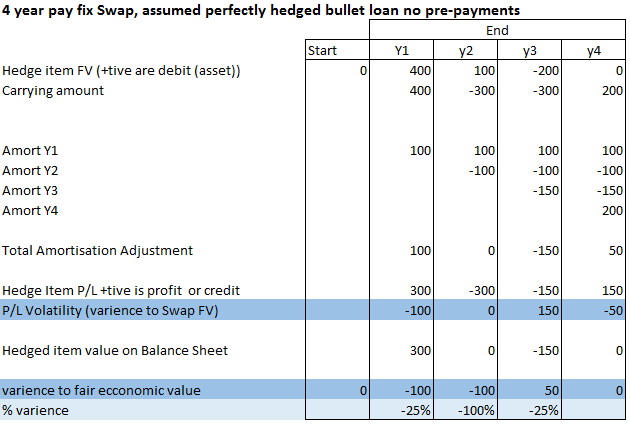Volatile financial markets pose significant challenges for banks and financial institutions worldwide. The unpredictability of swap rates and the lingering uncertainty reminiscent of the 2008 financial crisis require a strategic approach to risk management. In such a climate, traditional reactive hedging strategies are insufficient. Institutions must adopt a more dynamic and precise approach to protect margins and ensure capital stability. Leveraging advanced hedging strategies and real-time analytics is key to navigating these turbulent waters effectively.
Understanding the challenges of volatile markets
In today’s financial landscape, volatility is the norm rather than the exception. Global markets fluctuate with rapid movements, influenced by geopolitical tensions, economic shifts, and unforeseen global events. This environment challenges financial institutions to manage interest rate risk effectively, as even minor missteps can lead to significant financial repercussions. The complexity of balancing assets and liabilities, amidst ever-changing market conditions, necessitates a comprehensive understanding of risk exposure and a proactive hedging approach.
The stakes are high, and the margin for error is slim. Financial institutions must not only anticipate market shifts but also react swiftly to mitigate potential negative impacts. The traditional methods of hedging, which often rely on historical data and delayed responses, fall short in providing the agility needed in fast-moving markets.
Leveraging real-time data for proactive hedging
To hedge effectively in volatile markets, financial institutions must harness real-time data analytics. This involves continuously monitoring balance sheet behaviours, such as drawdown rates, prepayments, and the stickiness of non-maturity deposits. Real-time analytics provide insights into the dynamic gaps between assets and liabilities, allowing institutions to identify mismatches as they occur.
By employing sophisticated scenario modelling, institutions can stress-test their strategies against various rate shocks or liquidity constraints. This predictive approach ensures that treasury teams can hedge proactively rather than defensively. With data-driven insights at their disposal, financial institutions can make informed decisions with confidence, turning volatility into an opportunity for strategic advantage.
Optimising execution with advanced treasury systems
In the fast-paced world of financial markets, execution speed and accuracy are paramount. Advanced treasury management systems streamline the hedging process, enabling seamless execution of swaps and derivatives with live pricing and full audit trails. These systems offer comprehensive collateral management, tracking postings, margin calls, and collateral support annex (CSA) terms in real-time.
Furthermore, lifecycle control features allow institutions to monitor trades from inception to maturity, with alerts for rollovers or potential breaks. This level of control reduces errors and provides full visibility, ensuring that hedging strategies are executed flawlessly. By optimising execution processes, financial institutions can respond swiftly to market movements, minimising risk and maximising efficiency.
Aligning hedging strategies with profitability goals
Hedging is not an end in itself but a means to achieve sustainable margins and protect profitability. To align hedging strategies with commercial goals, financial institutions must integrate margin forecasting and strategy stress-testing into their risk management frameworks. By modelling net interest income under various rate scenarios, institutions can anticipate the financial impact of rate shifts.
Moreover, simulating the effects of balance sheet growth or product changes allows institutions to refine their strategies and avoid surprises. Transparency in cost structures uncovers hidden inefficiencies, enabling institutions to address basis risk and hedge inefficiencies proactively. By aligning risk management with profitability goals, institutions can ensure that their hedging strategies contribute to long-term financial stability.
Ensuring compliance through automated processes
Regulatory compliance is a critical aspect of risk management in volatile markets. Financial institutions must adhere to stringent standards, such as IFRS 9 and IAS 39, to document hedge effectiveness and manage accounting entries. Automated compliance processes reduce the risk of errors associated with manual documentation and streamline capital reporting, optimising risk-weighted assets (RWAs).
With audit-ready trails, every trade, valuation, and collateral movement is logged and traceable, ensuring transparency and accountability. By automating compliance processes, financial institutions can focus their resources on strategic decision-making rather than administrative tasks, enhancing overall operational efficiency.
The ALMIS® advantage: Transforming risk into resilience
In the face of market volatility, financial institutions need more than just tools; they need a strategic partner that offers an integrated platform for risk insight, execution, and reporting. ALMIS® International provides a comprehensive solution that combines dynamic analytics, streamlined execution, and profit-focused modelling into a single platform, empowering institutions to anticipate market shifts, act swiftly, and adapt strategies with agility.
By leveraging the ALMIS® One platform, financial institutions can transform risk into resilience, ensuring that their hedging processes are ready to withstand the challenges of volatile markets. The key to mastering hedging lies in embracing innovation and leveraging technology to gain a competitive edge in an unpredictable financial landscape.
In conclusion, navigating volatile financial markets requires a multifaceted approach that combines advanced hedging strategies, real-time analytics, and efficient execution systems. By aligning hedging strategies with profitability goals and ensuring compliance through automation, financial institutions can protect their margins and thrive amidst uncertainty. The ALMIS® advantage equips institutions with the tools and insights they need to turn market volatility into an opportunity for growth and success.





